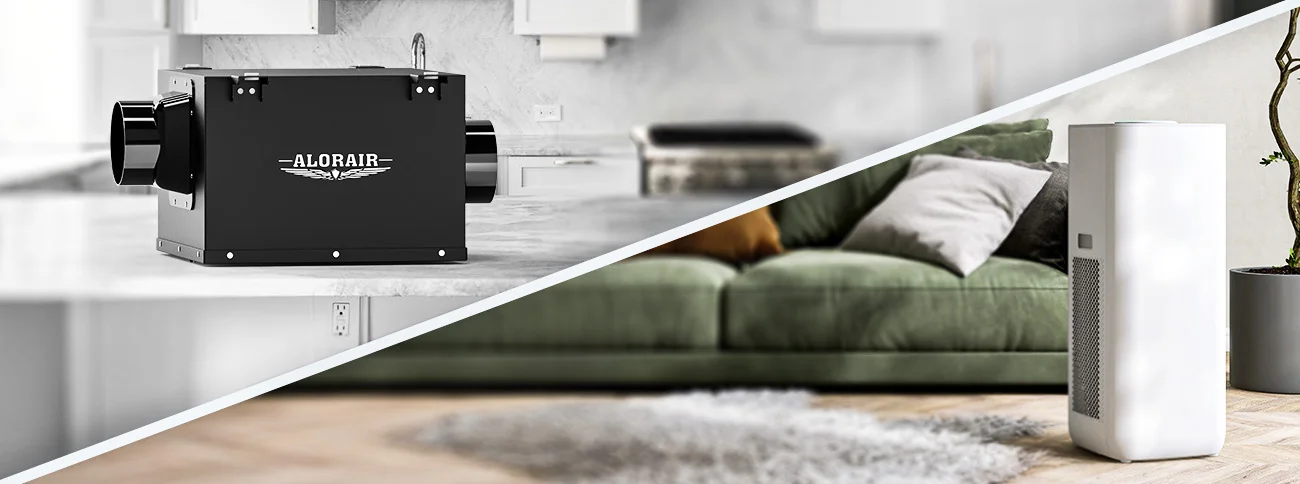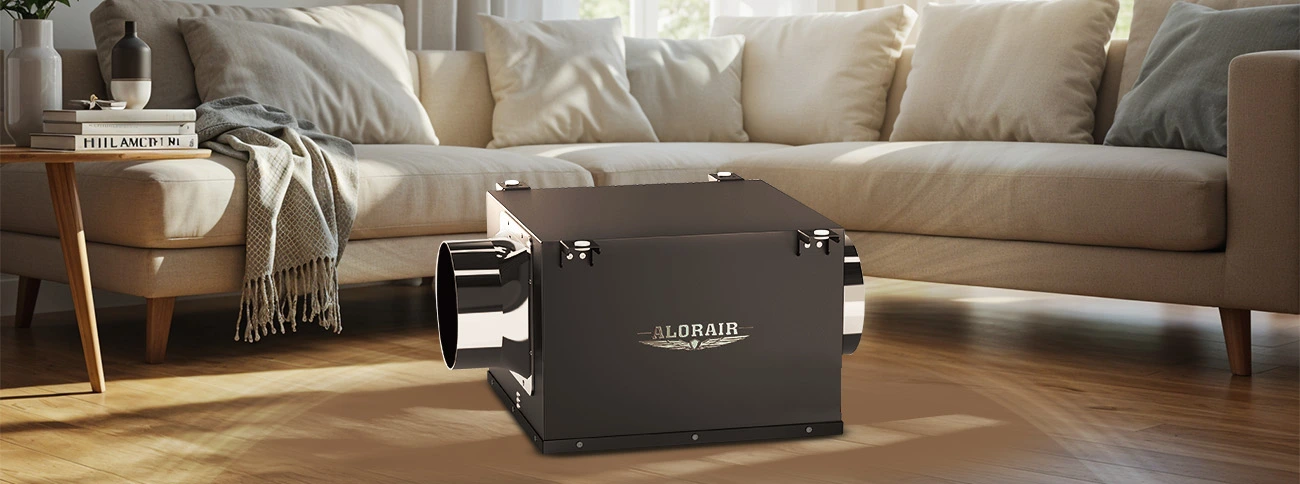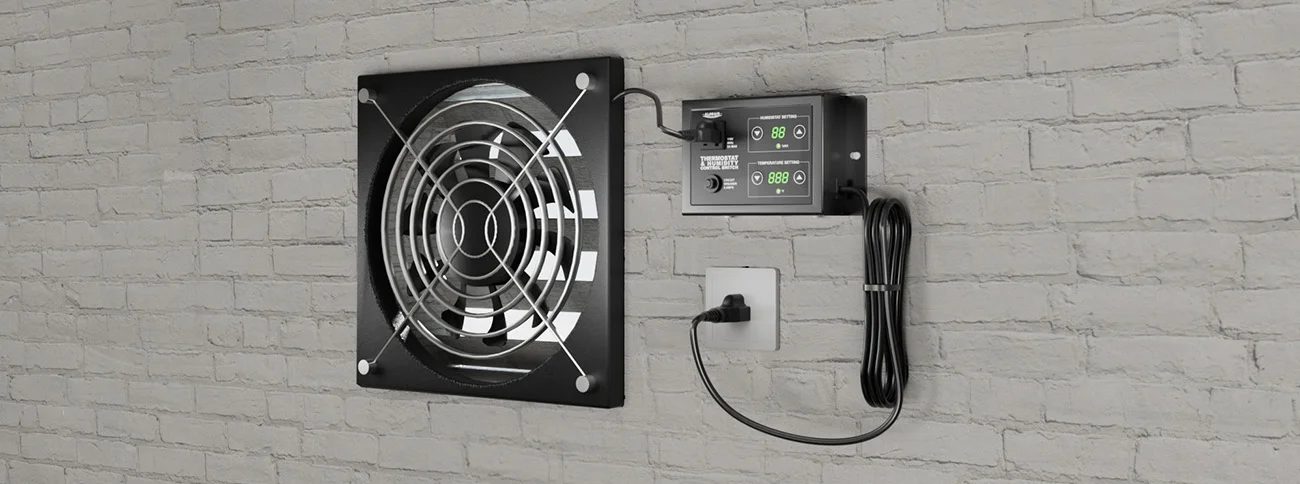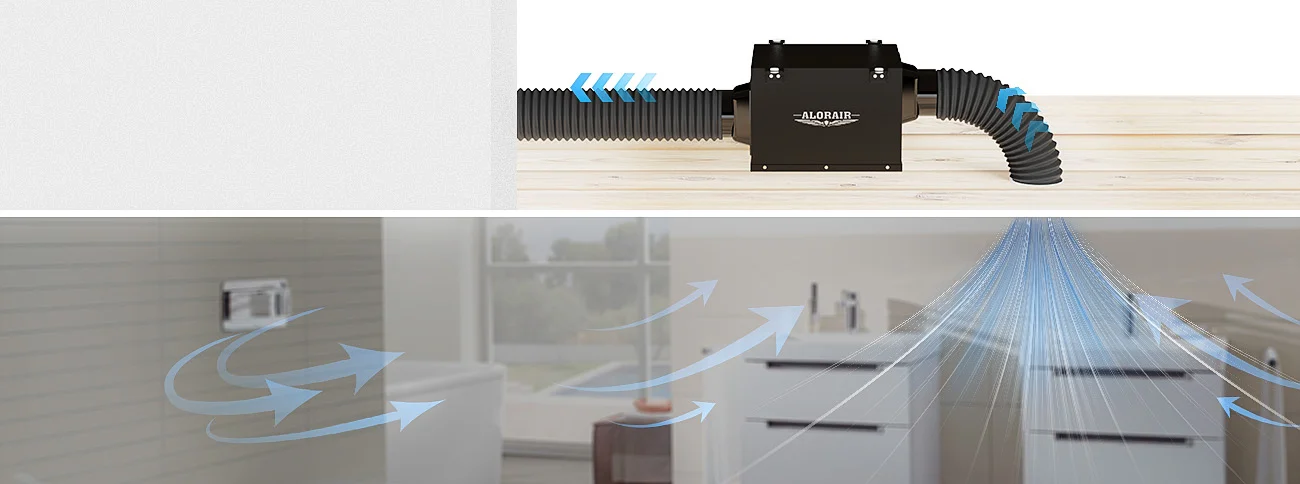In-line fans are an effective solution for improving ventilation in homes, offices, and industrial spaces. They help regulate airflow, remove excess humidity, and maintain better air quality.
However, choosing the right in-line fan can be challenging without knowing what to look for. Selecting the wrong fan may result in inadequate airflow, excessive noise, or unnecessary energy consumption.
In this guide, we’ll cover the key factors to consider when selecting an in-line fan, ensuring that you find the perfect fit for your needs.
What Is An In-Line Fan?
An in-line fan is a ventilation device that is installed within a duct system to enhance airflow and improve ventilation efficiency. Unlike traditional exhaust fans, which are mounted directly on ceilings or walls, in-line fans are positioned within the ducting system itself, making them more discreet and capable of moving air over longer distances.
It can be installed in multiple ways: within the ducting, on the wall, or on the ceiling.
In-line fans have different types, including axial, centrifugal, and mixed-flow models, each designed for specific ventilation needs. Axial fans are ideal for low-pressure applications, centrifugal fans provide higher airflow for longer duct runs, and mixed-flow fans offer a balance between power and quiet operation.
Airflow Capacity (CFM)
Airflow capacity, measured in cubic feet per minute (CFM), is one of the most important factors when choosing an in-line fan. The CFM rating determines how much air the fan can move per minute, and must be matched to the size of the space you intend on ventilating.
To calculate the appropriate CFM for your space:
- Measure the room’s dimensions (length × width × height) to determine the total cubic footage.
- Multiply the cubic footage by the recommended air changes per hour (ACH). Bathrooms typically require 8-10 ACH, while larger rooms may need 6-8 ACH.
- Divide the result by 60 to get the required CFM.
Choosing a fan with the correct airflow capacity ensures effective ventilation and prevents issues like humidity buildup and poor air circulation.
Fan Size
The size of the in-line should correspond to the diameter of your existing ductwork. Choosing a fan that is too small may restrict airflow, while an oversized fan could waste unnecessary energy.
Standard duct sizes typically range from 4 to 12 inches.
Noise Level (dB)
Another critical consideration is the noise level of the in-line fan, especially when considering residential and office applications.
Fans produce sound measured in decibels (dB), and lower dB ratings indicate quieter operation. If the fan will be installed in a living space or workplace, opting for a model with sound-dampening features or insulated ducting can help minimize noise.
Here’s a reference you can use when looking at normal to loud noise levels:
- 30 dB – Whisper-quiet operation, ideal for bedrooms or offices.
- 40-50 dB – Moderate noise, comparable to a conversation.
- 60+ dB – Loud operation, typically suited for industrial settings.
If noise is a concern, consider choosing an in-line fan with acoustic insulation or a speed controller to regulate noise levels.
Speed Controls
Some in-line fans come with adjustable speed controls, allowing you to customize airflow based on ventilation needs. Variable-speed fans are ideal for spaces where air circulation requirements change throughout the day.
Consider a fan with a built-in speed controller or one that is compatible with external controllers for added flexibility. Speed control not only helps optimize energy consumption, but also allows for a quieter operation when full power is not necessary.
Special Features
Modern in-line fans offer additional features that can enhance usability and efficiency, such as:
- Humidity Sensors – Automatically adjust fan speed based on moisture levels.
- Timer Functions – Enable scheduled operation to optimize energy use.
- Smart Controls – Allow remote access and automation via smartphone apps.
These features can improve convenience, efficiency, and overall performance.




